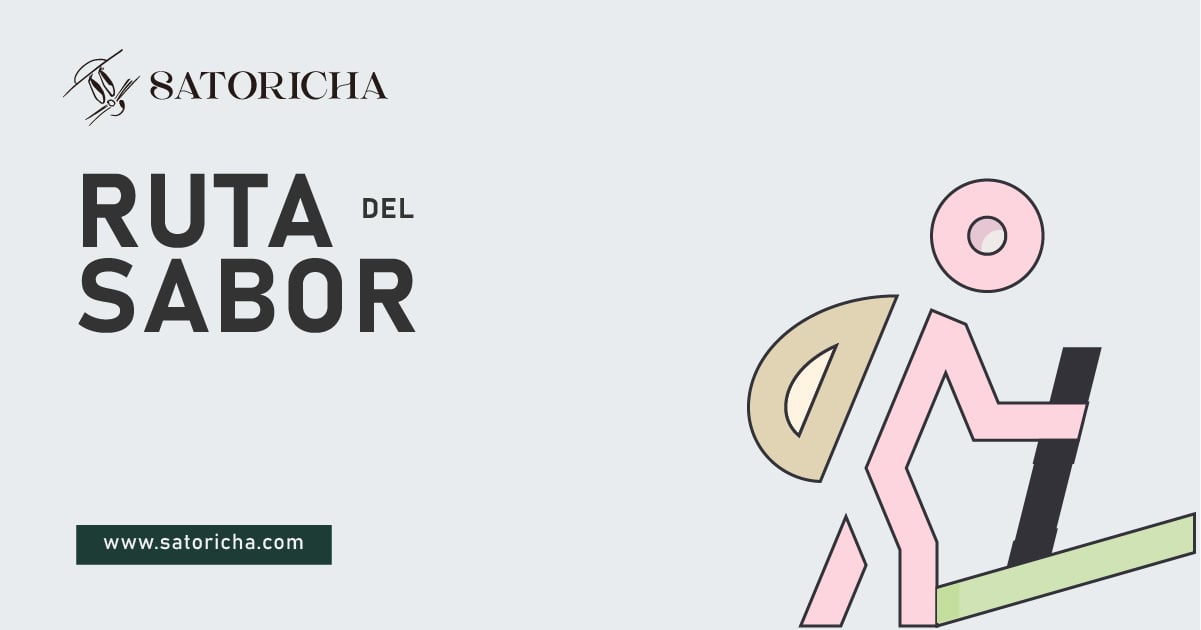Assuming is Dangerous
It might sound like advice or even a scolding, but assuming usually carries a negative connotation. And it's not without reason—assuming can backfire because it means forming a preconceived notion about a situation without fully understanding it.
Still, not everything is black or white. There's a whole spectrum of gray in between. Assuming can both limit and expand what we think we know—and that's where the risk and sometimes the opportunity lie.
In previous reflections, we explored how, along this flavor route, the so-called "weakest link" —the customer— actually plays the roles of judge, participant, and executioner. Yet, this dynamic shifts when the consumer becomes an active part of the value chain, whether as an entrepreneur, collaborator, or someone directly influencing value-creation processes.
Is the customer really the weakest link?
In truth, no. But they're not the strongest either. Businesses need customers to generate revenue, just as customers need products and services that meet their needs. The same goes for producers. It's often said they are the weakest, but there would be nothing to sell without them. There are no inherently more or less important links—every actor in a value or distribution chain is interdependent.
Where do these ideas come from, then?
They stem from the realities experienced by each agent. Each one fights to be seen, to survive, to stay afloat. And the more agents that enter the chain, the higher the costs. Everyone charges "the value of their work."
But this is where textbook theory loses ground. In real life, conditions change depending on one's position. Access to tools, knowledge, or markets largely determines how much one's work is worth.
For instance, consider a middleman (often called a "coffee coyote") who buys beans at extremely low prices from producers living deep in rural areas without access to sales channels, technology, or information. This middleman later resells the same product at a much higher price. So, what is the real value of the coffee? And who decides that? In such cases, access to knowledge and tools becomes a game-changer.
It might seem naïve for a farmer to sell their product to just anyone, especially to someone offering far less than what it's worth. However, many consider this production to be a means of subsistence. If they don't sell, they can't repay their debts or, in the worst-case scenario, put food on the table.
This is where we encounter a crossroads: negotiations unfold according to the needs and interests of each party. Of course, everyone is trying to secure their own benefit, but the access—or lack thereof—to tools and knowledge tips the scales, making one party "strong" and the other "weak," just like with the customer.
In any business or organization that generates income (which means all of them), the priority is having someone to sell to—but even more importantly, having someone willing to buy. The buyer ultimately determines whether a business or organization deserves to exist in the market. For startups, banks typically consider a five-year timeframe to assess whether the venture is viable or not.
Ironically, in a hyperconnected, globalized world—one that sometimes suffers from information overload—where customers can easily form virtual communities across borders and are increasingly aware of the consequences of their actions, the market seems to exist somewhere between two paradigms: traditional product-centric marketing (often referred to as Marketing 1.0) and value-driven, humanized marketing (known as Marketing 4.0). The former focuses on production and profitability, while the latter centers on values, collaboration, and customer relevance.
I believe we've allowed ourselves to be intimidated by the Pirates of Dreams and Monarchs of the shadows lurking in the market. We've let them devalue us and tell us what to do—even while society claims to reject being told what to do. Ironically, many who make that claim are actually waiting for someone to guide them. People—ourselves included—are assigning value to others without any genuine concern for fairness.
What's interesting is the duality of appearances depending on which side we're on. For example, as a customer, I might demand transparency and only buy from brands that provide it. But when I'm acting as a sales rep trying to hit a target to pay off debt, I might gloss over or "enhance" the features of a product to secure a sale.
Essentially, we neither chop firewood nor lend the axe—a saying that illustrates the double standard we've normalized. This inconsistency, or double morality, is what's preventing us from fixing the fissures within the market—and by extension, within our societies.
We err when we assume too much and take things for granted. Take the following example:
A tea shop employee notices that many customers ask about product origins. Although traceability is becoming increasingly important, she chooses not to dig deeper or inquire with her supplier. She assumes that "people only care about price" and that "those questions are just a trend." She continues selling as usual, brushing off concerns with vague answers.
Over time, customers stop returning. Some even post reviews criticizing the store's lack of transparency. However, she doesn't connect the feedback with her approach or lack of information. Instead, she blames the economy or competition or shrugs it off as "just how the market is." Her response: resist, wait, don't change. She assumes nothing can be done and that trying would be pointless.
In this case, assuming without questioning doesn't just prevent improvement—it reinforces harmful dynamics that ultimately damage the business. The real risk isn't just losing sales but losing relevance. If we refuse to acknowledge the possibility of doing things differently—even in small ways—we perpetuate the problem and forgo any potential for transformation.
As someone once said, "If everything we do seems right, then something must be wrong".
Satoricha ~

Comments